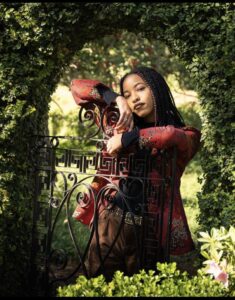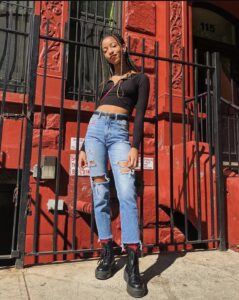
Autumn Love, a junior digital media production student at Florida State University, is all-too-familiar with the narratives of a non-binary individual. Love is referred to using they/them pronouns.
“For me, being non-binary essentially is identifying freely and not conforming to the normal conventions of the regular binary. I don’t want to be boxed into, ‘Oh, you’re a woman so you can only do certain things or be a certain way,’” Love said.
According to GLAAD, an LGBTQ+ rights and support organization, 20% of millennials identify outside of the gender binary, whereas only 7% of baby boomers are gender-expansive. The population of gender queer adults is evident among cisgendered people similar to the LGBTQ+ community. The non-binary community is not new or a fad. It is here to stay.
Although, Love’s identity was averred when they came out during the early stages of quarantine after COVID-19 related school closures, Love in many instances has felt invisible or experienced being misgendered.
“This was something that I struggled with a lot before I officially came out and I felt like I had to be visibly ambiguous to identify as non-binary,” Love said. “I knew that wasn’t true, you don’t have to do that, but that’s something that I battled with on my own. So when I first cut my hair, I remember being like: ‘Oh I feel more comfortable saying openly that I’m non-binary.’ I remember sharing that with one of my old friends, and she didn’t say anything, she just kind of looked at me.
“That made me feel some type of way because I was initiating that conversation, and instead of being interested in at least hearing me out, they were just kind of staring at me like a deer in headlights. So, that made me feel kind of invisible,” Love added.

Cisgendered people often fail to understand why anyone would want to exist outside of the male or female check box. Or, in most cases, people make assumptions about someone’s gender and in turn make spaces appear and feel less inclusive. Thus, non-binary individuals sometimes exist under the radar and are not moved to share their pronouns or correct someone when misgendered out of fear of speaking up and others not respecting their identity.
“Unfortunately, I do see a lot of the non-binary students I come into contact with being sort of dismissed almost by a lot of people. Most of it is accidental misgendering —it takes time to get used to they/them pronouns — but sometimes, it isn’t unintentional,” Jessica Marino, a former Gender-Sexuality Alliance sponsor told the Eagle Eye.
This type of behavior, or in it’s worst form, erasure, is what Marino and Love believe adds to the gap persisting between cisgender and non-binary people. Aside from personal identity, there are not many things separating the two except presumptions.
When asked, Elizabeth Gape, a junior environmental science and policy student at FSU and Love’s roommate, hinted at the common misconceptions about non-binary people.
“I feel like people sometimes have this concept that unless you’re presenting super androgynous you can just automatically assume that when someone’s presenting as masculine, they’re more likely to associate those pronouns (he/him) with them. Assuming that since they tend to be more feminine, that they can automatically associate this gender with them when that’s not the case,” Gape said.
Love, like many other college students, leads a normal life and enjoys listening to music and rollerblading. Love one day hopes to work behind the silver screen affording gender-queer individuals with narratives that don’t include feeling invisible. Love’s identity and pronouns not only provide a sense of self, they also affirm Love’s place in the world when it feels like they have none.
For more information on gender non-conformity visit transequality.org.